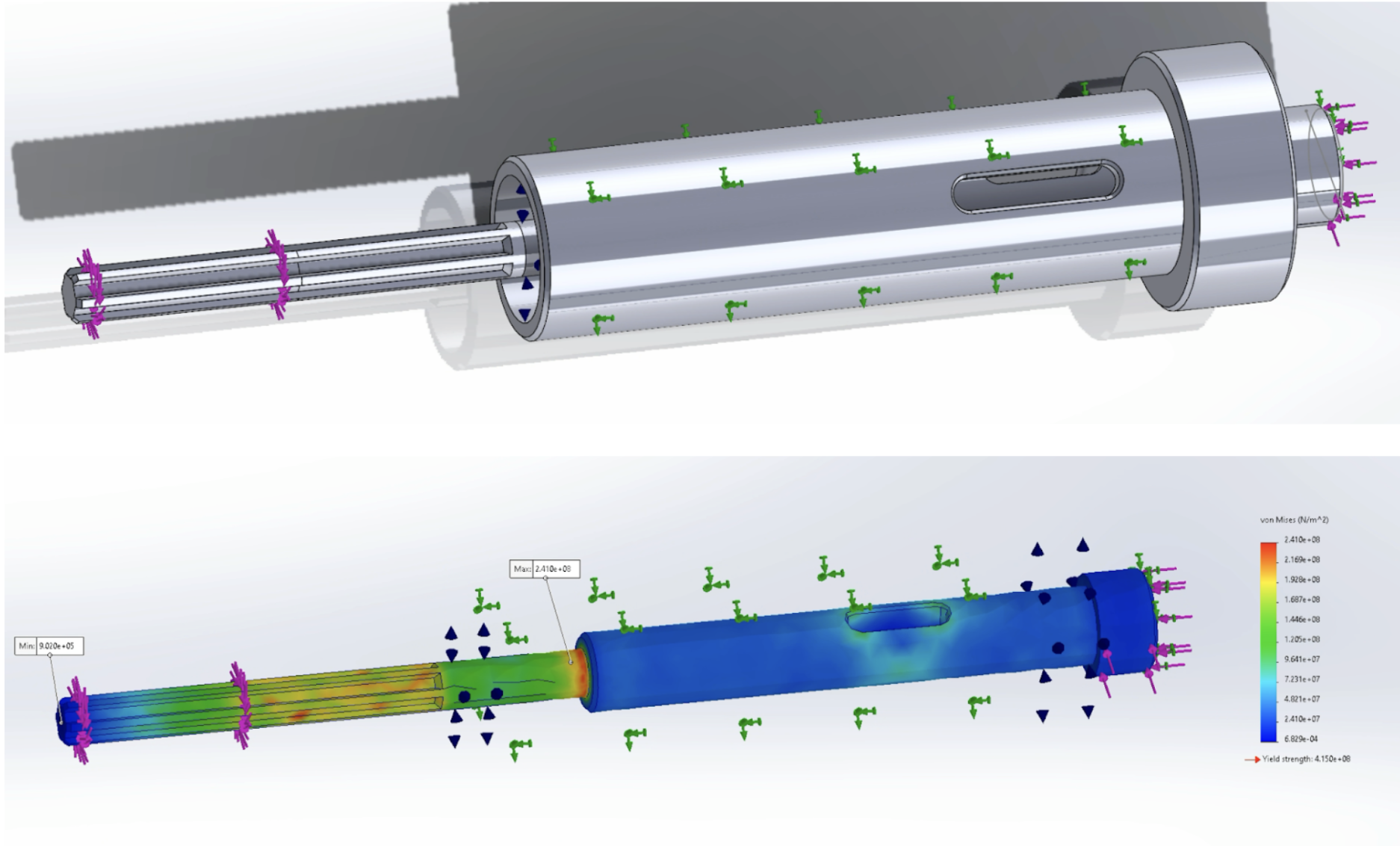Project summary
In this project I analyzed static and dynamic failure of a drill press spindle undergoing worst-case loading. I used analytical and finite-element analyses to determine factors of safety corresponding to each failure mode. For static failure I considered the Rankine and Distortion-Energy theories. For fatigue failure I considered a worst-case fatigue loading, and applied the Gerber and Langer criteria, which is appropriate for ductile materials.
In order to setup the analytical analysis I first constructed an FBD and shear-moment diagrams to determine the point along the spindle most likely to fail. I then found the stresses acting at this point due to the worst-case combined loading, drew the state of stress and Mohr’s circle to find the principal stresses and maximum shear stress, upon which I then applied the failure criteria. CAD and FEA were conducted in Solidworks.
The lowest factor of safety was found to be 3.7 for both the Rankine and DE criteria, indicating a high margin-of-safety for even a worst-case static loading. A factor of safety of 1.7 was found through FEA. Though the factors of safety differ by a considerable amount, they agree on the location along the spindle most likely to fail, and thus where reinforcements and/or a larger radius fillet should be added.
See the full report here or below:
